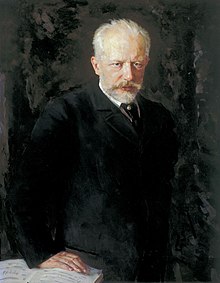Serenade for Strings

Serenade for Strings in C major, Op. 48 is a work for string orchestra by Pyotr Ilyich Tchaikovsky. It premiered in 1880. The serenade consists of four movements:
- Pezzo in forma di sonatina: Andante non troppo — Allegro moderato
- Valse: Moderato — Tempo di valse
- Élégie: Larghetto elegiaco
- Finale (Tema russo): Andante — Allegro con spirito
Tchaikovsky intended the first movement to be an imitation of Mozart's style. It was based on the form of the classical sonatina, with a slow introduction. The 36-bar Andante introduction is marked "sempre marcatissimo". It is littered with double-stopping in the violins and violas. This introduction returns at the end of the movement. It reappears, transformed, in the coda of the fourth movement. Tchaikovsky intended the work for a large string orchestra. On the second page of the score, he wrote, "The larger the string orchestra, the better will the composer's desires be fulfilled."[1] George Balanchine used the work for his ballet Serenade in 1934Excerpts from the score were used in the 2005 ballet Anna Karenina, choreographed by Boris Eifman. The waltz was arranged for soprano and full orchestra for the 1945 MGM movie Anchors Aweigh. It was performed by Kathryn Grayson with José Iturbi conducting the MGM studio orchestra.
References[change | change source]
- ↑ "Tchaikovsky Research : Serenade for String Orchestra, Op. 48 (TH 48)". Archived from the original on 2012-02-25. Retrieved 2012-02-15.
